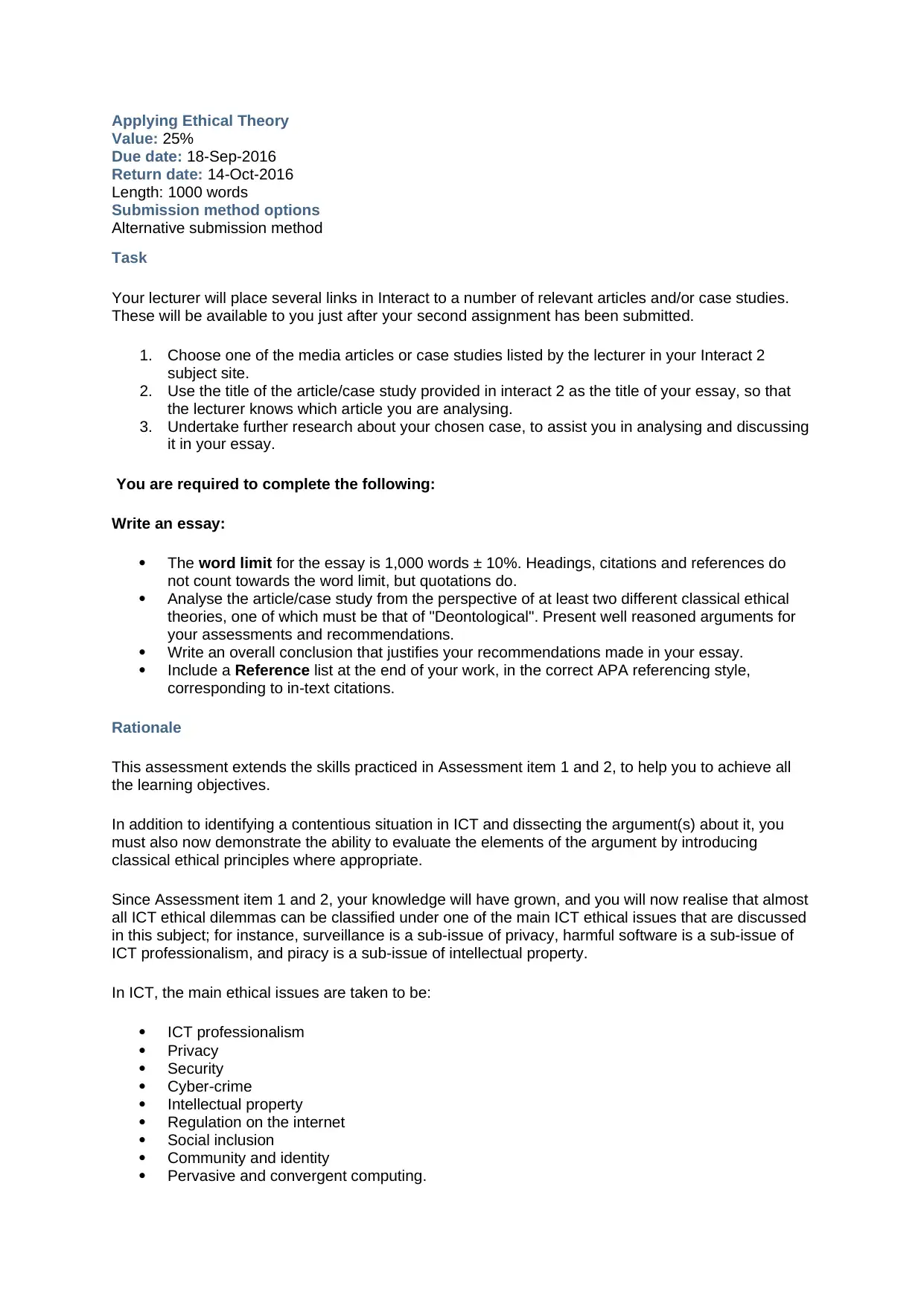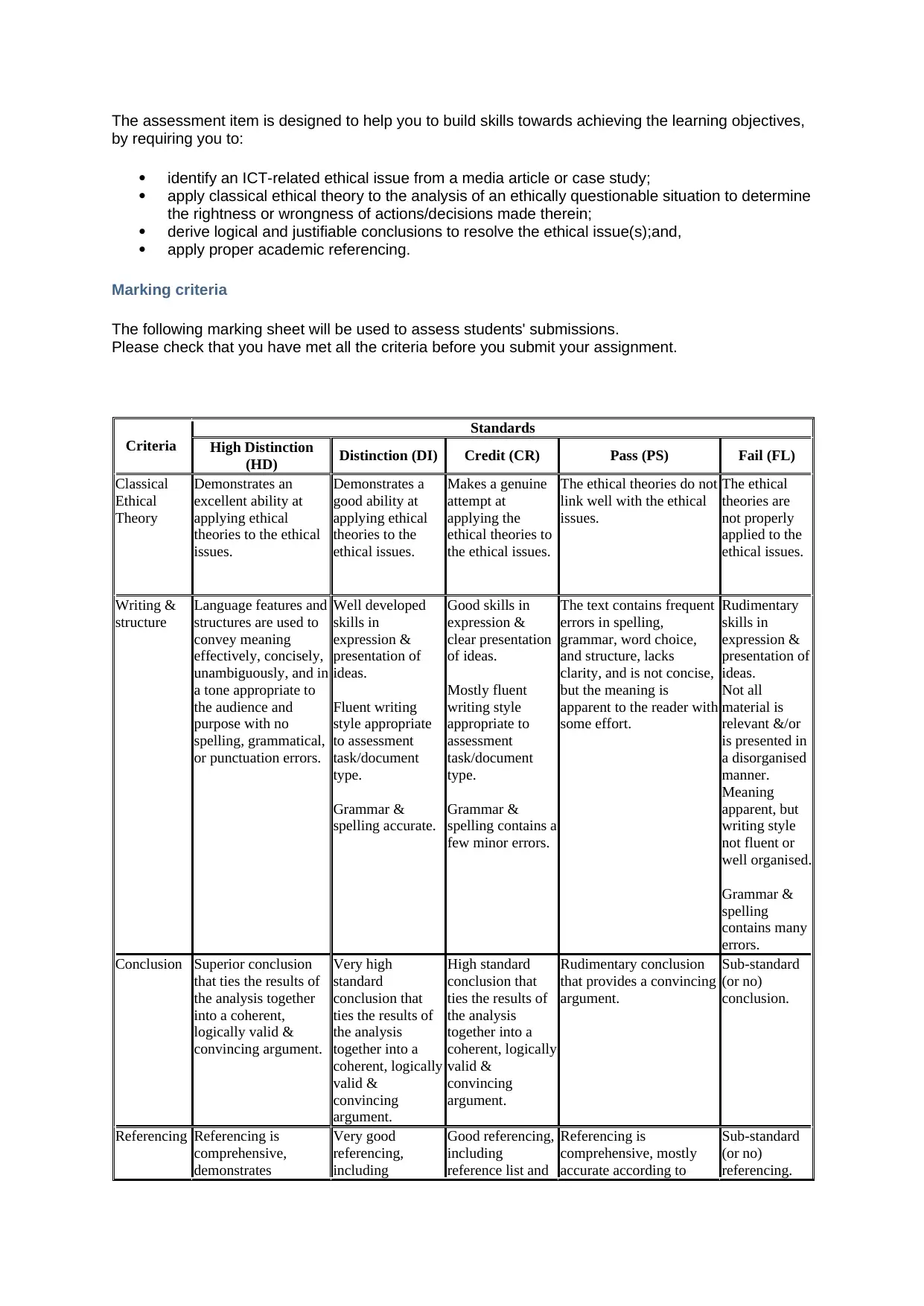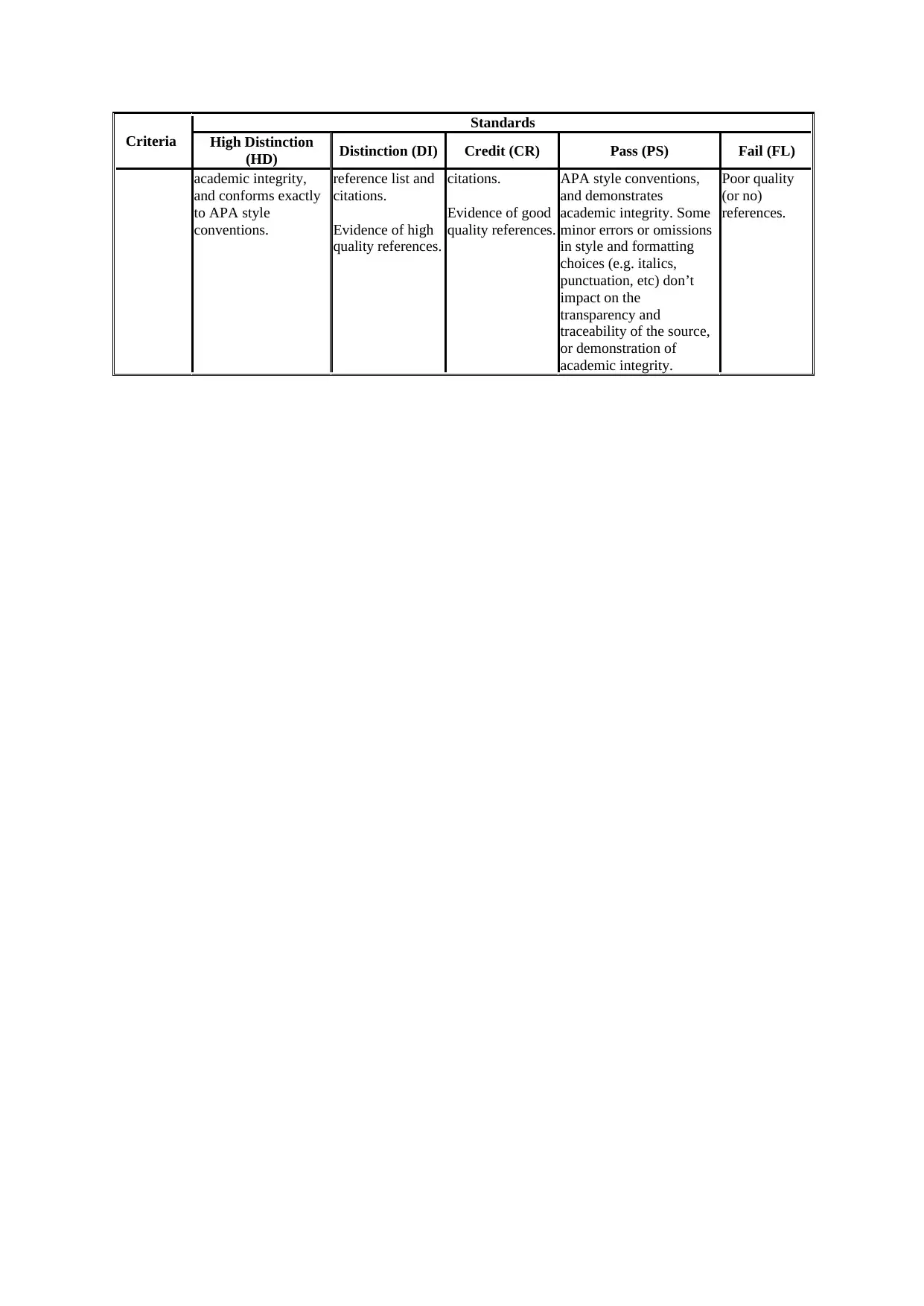Analyzing ICT Ethical Issues Using Ethical Theories - [Course Name]
VerifiedAdded on 2019/10/18
|3
|976
|461
Essay
AI Summary
This essay analyzes an ICT-related ethical issue by applying at least two classical ethical theories, with a requirement for Deontological ethics. The essay involves selecting a media article or case study provided by the lecturer and conducting further research to analyze it. The analysis should present well-reasoned arguments for assessments and recommendations, culminating in a conclusion that justifies the recommendations. The essay follows a structured format, including headings, citations, and references in APA style. The rationale emphasizes the application of ethical principles to ICT dilemmas, covering areas like professionalism, privacy, security, cybercrime, intellectual property, and regulation. The marking criteria assesses the application of ethical theories, writing quality, structure, the conclusion's coherence, and the accuracy of referencing. The essay aims to improve the student's ability to identify ethical issues, apply ethical theory, derive conclusions, and use proper academic referencing.
1 out of 3










![[object Object]](/_next/static/media/star-bottom.7253800d.svg)